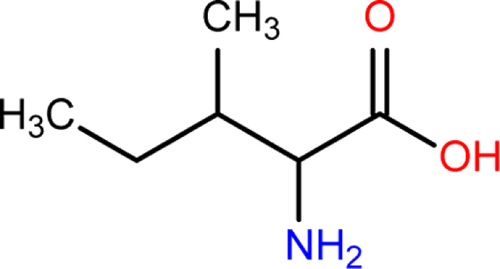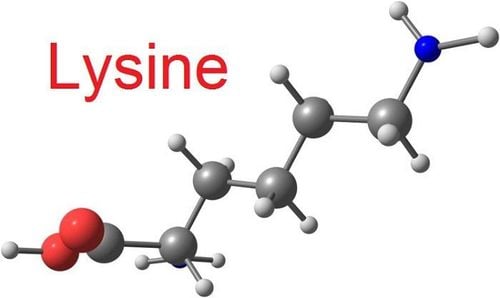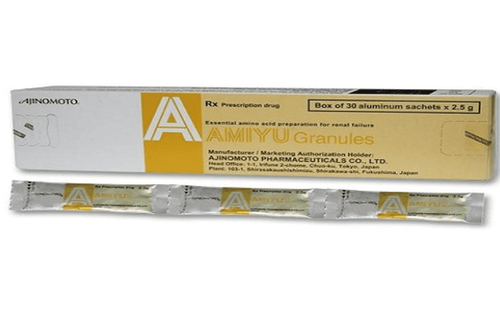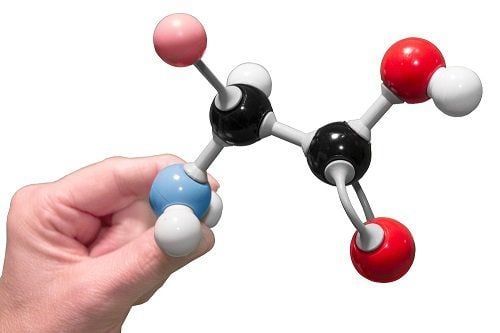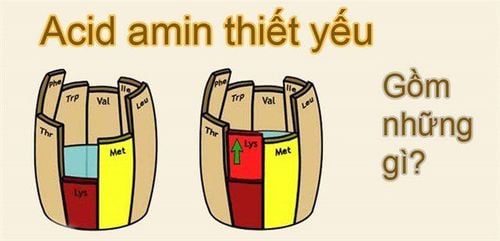This is an automatically translated article.
Amino acids play an important role in the body, are the building blocks of protein, have the effect of supporting metabolism, improving mood, exercising and maintaining muscle growth.
1. What are amino acids?
Amino acids are important components, constituting different proteins, taking on many roles and functions in the body's vital activities. In addition, amino acids also have the effect of synthesizing the necessary hormones and neurotransmitters to support biochemical processes in the body.
Amino acids combine together in certain sequences in different bonds to form molecules that are different in both composition and properties. Thus, the nutritional value of a protein is determined based on the relationship between the quantity and quality of the different amino acids that make up that protein.

Acid amin có vai trò quan trọng đối với cơ thể, là thành phần cấu tạo nên protein, duy trì phát triển cơ bắp
2. Properties of amino acids
The main elements that make up amino acids are carbon (C), hydrogen (H), oxygen (O), nitrogen (N), and a few other elements that participate in the substituent composition of each amino acid.
Physically, amino acids have the following properties:
Physically amino acids are crystalline solid particles, with a sweet taste, a few with a bitter taste; Most amino acids melt at relatively high and close temperatures, with decomposition; Easily soluble in water because all amino acids exist in the form of dipole ions. In terms of chemistry, amino acids show the following chemical properties:
Amino acids are both acidic and basic, so they have the ability to react with inorganic acids and alkalis to create corresponding salts; Condensation reaction, creating polymer; Esterification reaction.
3. Classification of amino acids
The human body needs up to 20 different amino acids to serve the development and necessary life activities. They are classified into 2 types: Essential amino acids (the body cannot synthesize them), Non-essential amino acids (the body can synthesize them).
3.1. Essential Amino Acids Essential amino acids cannot be produced by the body, but must be supplemented daily through the diet. The best sources of essential amino acids are animal protein, eggs, and poultry.
Through the process of digesting food, protein is broken down into many separate amino acids. These amino acids are absorbed from the intestines into the bloodstream and into the organs, where they are used to synthesize proteins specific to the body's needs, such as building muscle and regulating system function. immunity.
There are 9 essential amino acids, including:
Phenylalanine: A precursor of neurotransmitters such as tyrosine, dopamine, epinephrine and norepinephrine. Phenylalanine plays an integral role in the structure and function of proteins, enzymes, and also in the production of other amino acids. Valine: 1 of 3 branched chain amino acids, i.e. in its structure there is a chain branched on one side. Valine helps stimulate growth, muscle regeneration and participates in energy production for the body. Threonine: The main building block of important structural proteins of the skin and connective tissue such as collagen and elastin. Threonine is also involved in fat metabolism and is involved in immune function. Tryptophan: Essential amino acid that maintains nitrogen balance in the body and is a precursor to serotonin, a neurotransmitter that regulates appetite, sleepiness, and mood. Methionine: Plays an important role in metabolism and detoxification for the body. Methionine is also needed for tissue growth and the absorption of zinc, selenium and other minerals essential for good health. Leucine: Similar to valine, leucine is also a branched-chain amino acid, which is important in protein synthesis and muscle repair. Leucine also helps regulate blood sugar, stimulates wound healing, and produces growth hormone. Isoleucine: The last amino acid in the trio of branched chain amino acids, isoleucine is involved in muscle metabolism and is highly concentrated in muscle tissue. Isoleucine also has important effects on immune function, hemoglobin production, and energy regulation. Lysine: Essential amino acid that plays a key role in protein synthesis, hormone and enzyme production, and calcium absorption. Lysine is also involved in energy generation, immune function, and collagen and elastin production. Histidine: Used to produce histamine, a neurotransmitter that is important in immune response, digestive system function, genitourinary system, and sleep cycles. Histidine is also very important for maintaining the myelin sheath, a protective barrier that surrounds nerve cells. As such, essential amino acids are an important core involved in many biochemical processes of the body. An essential amino acid deficiency can negatively impact the entire body, including the nervous system, reproductive system, immune system, and digestive system.
3.2. Non-essential amino acids Non-essential amino acids make up a large proportion of the protein composition of feed, including 11 types:
Arginine Alanine Cysteine Glutamate Aspartate Glycine Proline Serine Tyrosine Glutamine Asparagine. Certain types of amino acids are only considered necessary in specific situations, such as helping to treat illness or reduce stress. The body can synthesize these amino acids on its own, but the internal synthesis can only meet the minimum needs of the body.
For example, although Arginine is considered non-essential, the body will not be able to produce enough Arginine and needs to supplement to meet the need when the body is fighting with certain diseases (eg. such as cancer).
That's why some patients need to be supplemented with non-essential amino acids through the diet to meet the body's needs.
4. What are the effects of amino acids?
4.1. Helps improve mood and sleep Tryptophan is an amino acid needed for the production of serotonin, a neurotransmitter in the body that regulates mood, sleep and behavior.
Low serotonin levels are associated with depression and sleep disturbances. Supplementing with tryptophan can reduce symptoms of depression, improve mood, and aid in better sleep.

Acid amin giúp cải thiện tâm trạng và giấc ngủ
4.2. Increases exercise performance The trio of branched chain essential amino acids are very commonly used in reducing fatigue, improving exercise performance, reducing soreness and stimulating muscle recovery after exercise. sports with high intensity. In addition, taking 4 grams of leucine daily for 12 weeks increased muscle strength in non-exercising men, meaning that the essential amino acid also provides certain benefits in terms of strength. muscle strength for non-athletes.
4.3. Preventing muscle loss Muscle loss is a common side effect in patients undergoing treatment and bed rest for long periods of time, especially in the elderly.
Essential amino acids work to prevent muscle breakdown and preserve muscle mass. Amino acid supplementation has also been shown to be effective in maintaining lean mass in the elderly and athletes.
4.4. Promotes weight loss The trio of branched-chain essential amino acids has been shown to stimulate fat loss, reduce body weight, and reduce fat percentage (in a comparative study with milk or sports drinks).
Thus, daily supplementation of essential amino acids is extremely necessary, helping to improve mood, increase exercise performance, prevent muscle loss and support weight loss. An amino acid deficiency carries the risk of a wide range of adverse health effects and symptoms. Building a nutritious, protein-rich diet is key to preventing nutritional deficiencies and ensuring you're getting all the essential amino acids your body needs.
Please dial HOTLINE for more information or register for an appointment HERE. Download MyVinmec app to make appointments faster and to manage your bookings easily.
Article referenced source: Healthline.com, Newstoday



